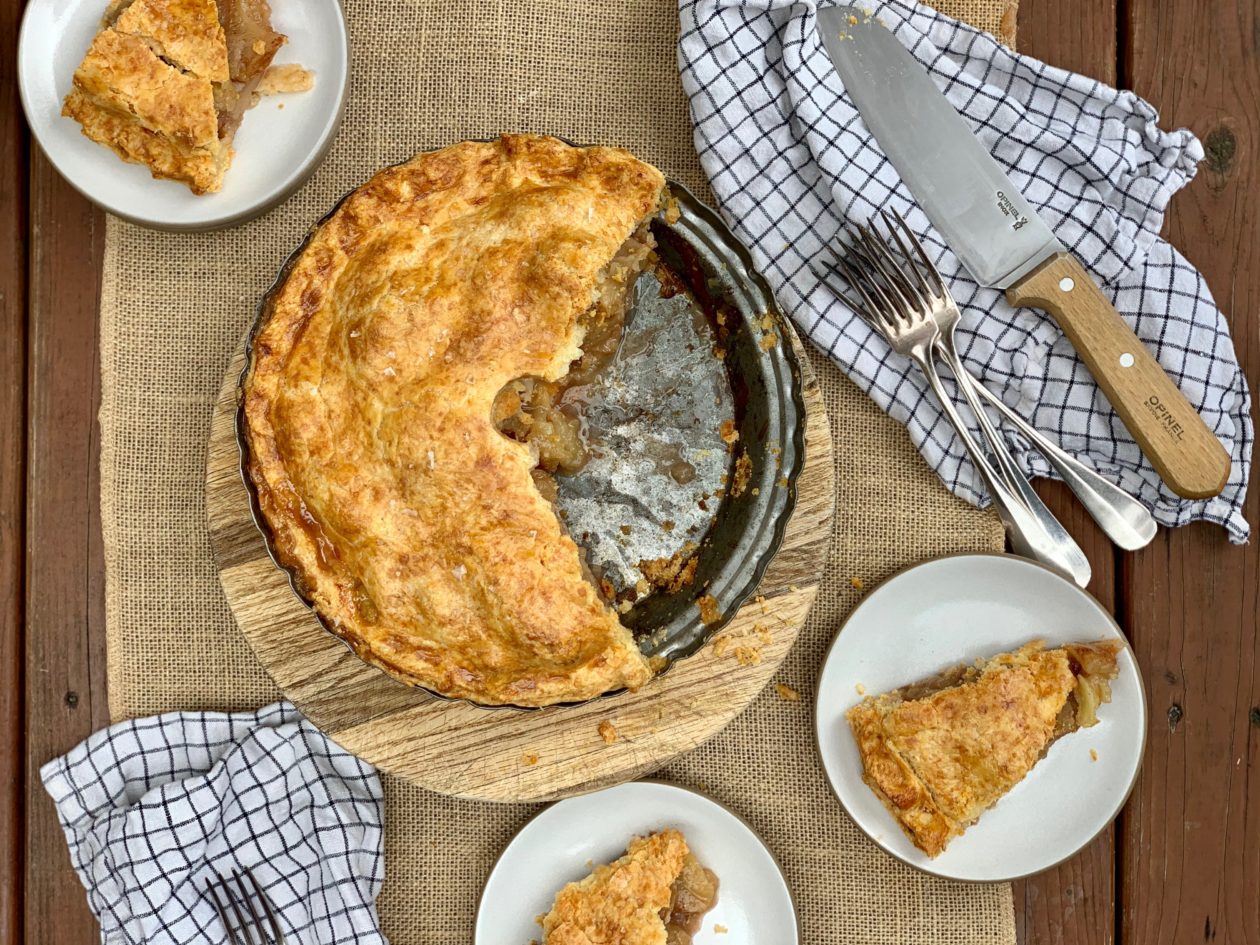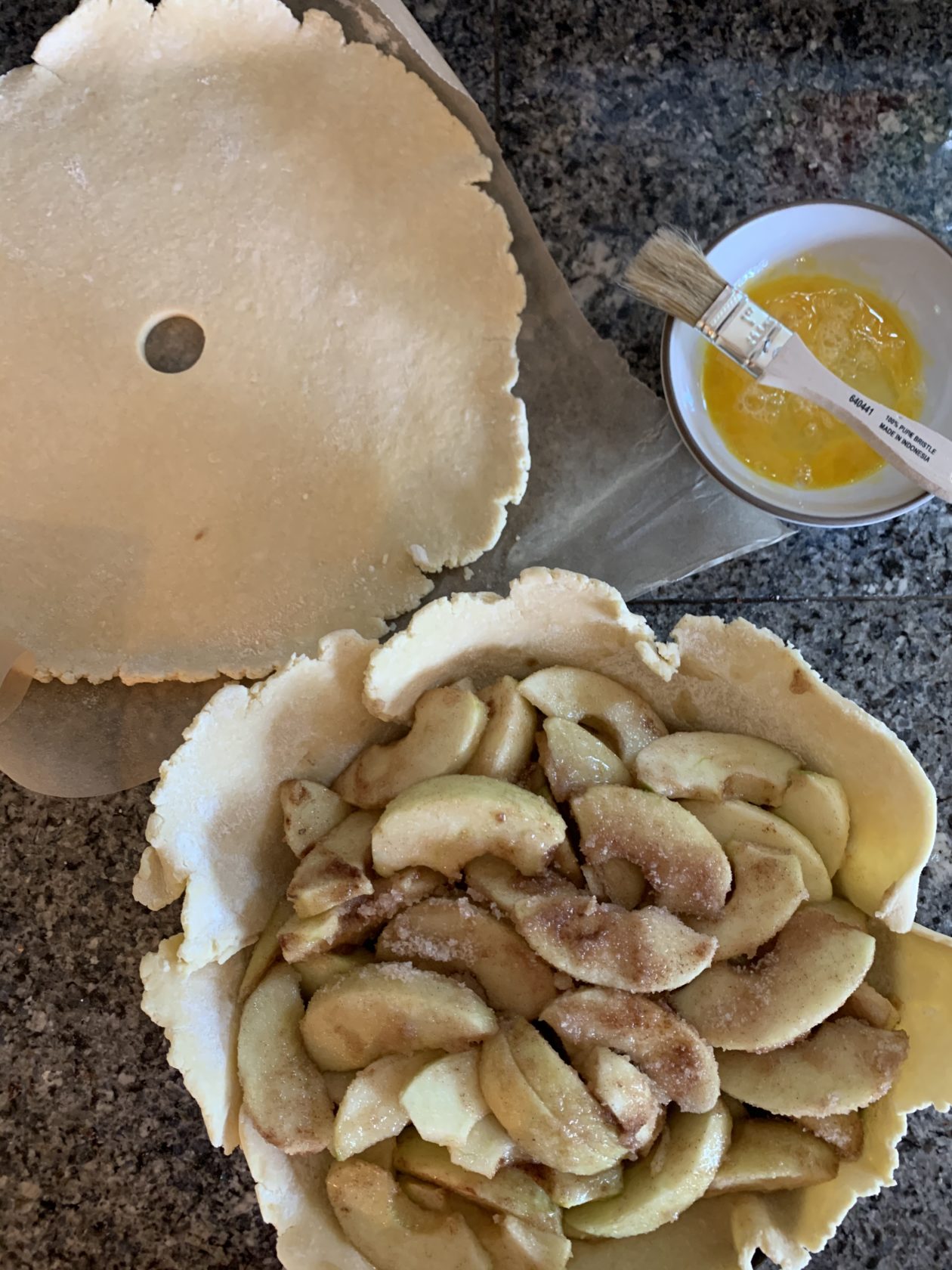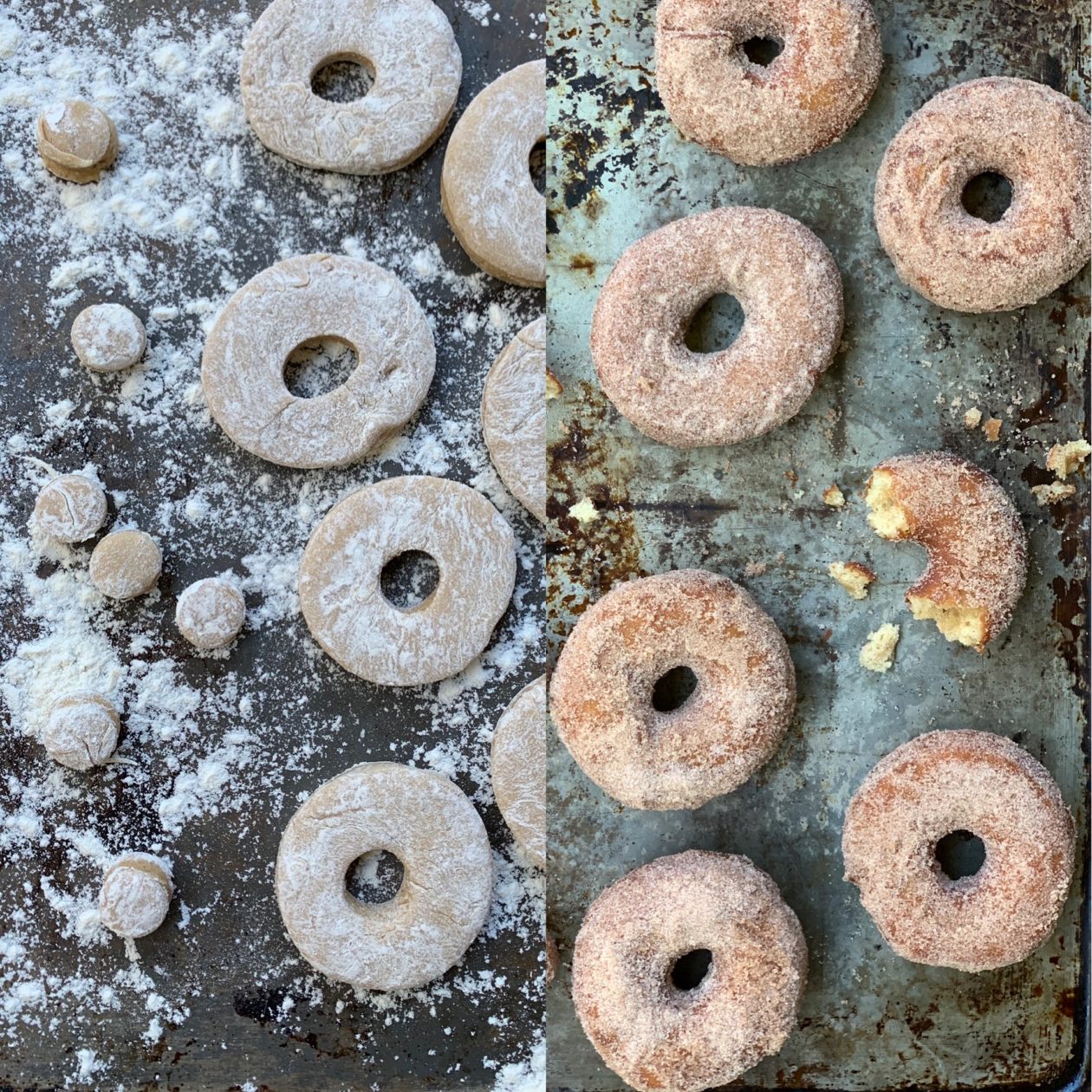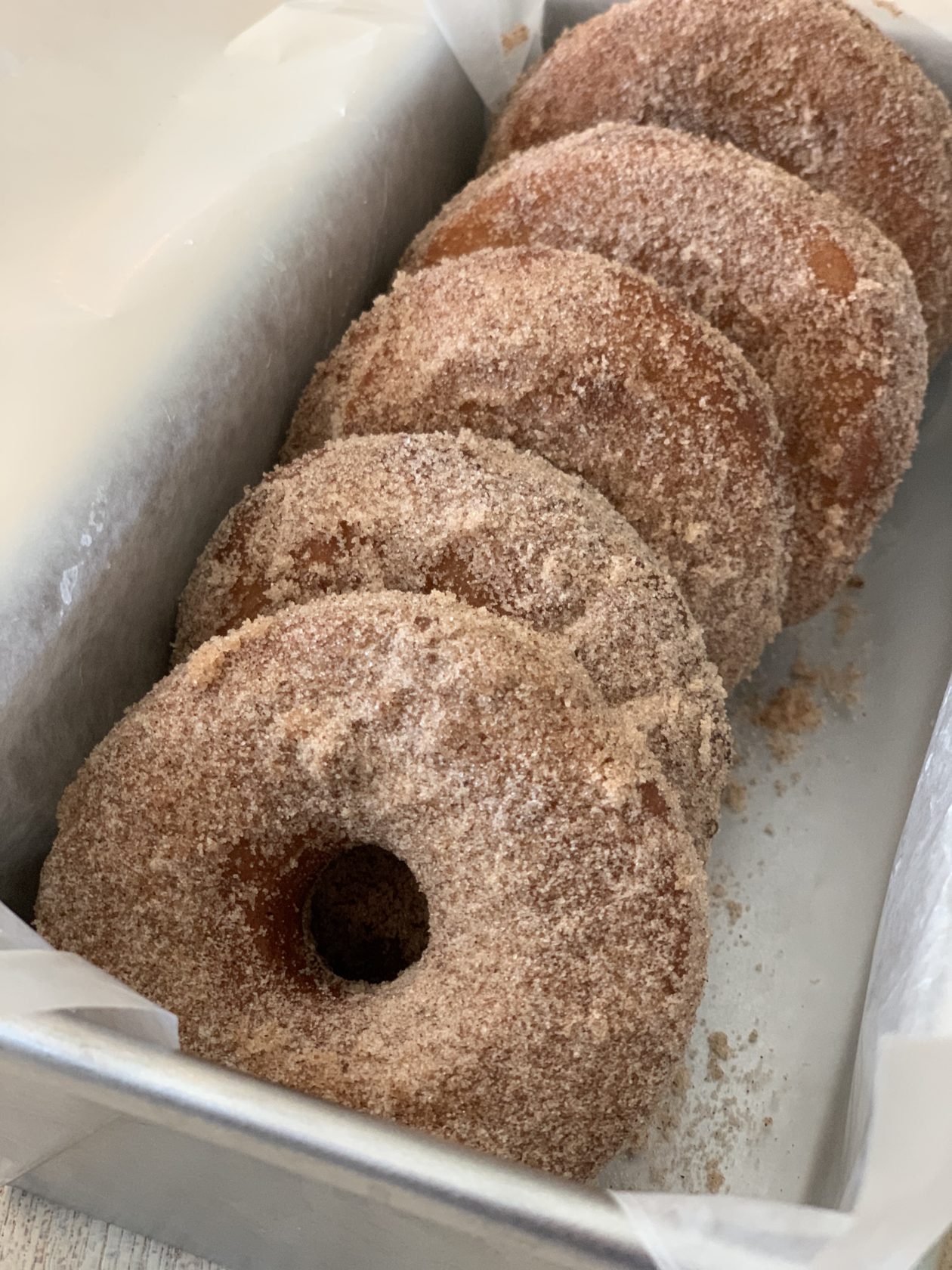Recipes by Jess Thomson
A Virtual Vermont Tour Starts in the Kitchen
On a clear, cold fall day in Vermont, the trees explode with color. Having grown up in Idaho, where the trees turn pleasant shades of yellow and orange, I wasn’t ready for lipstick reds, shocking pinks, and royal purples. Seeing fall in Vermont is like eating Froot Loops after a lifetime of generic-brand Cheerios. The trees’ brilliance feels almost indecent. Cover the childrens’ eyes, honey. They’re not ready for that big maple over there.
There’s little that’s not picturesque in Vermont in the fall. Whether you’re driving past verdant pastures, ogling black-and-white-spotted Holstein dairy cows, or traipsing the covered bridge routes, you’ll notice the escaping of many sighs, of ooohs and ahhhs that might make you, at least for a moment, convinced it’s time to relocate. But then you’ll drive past the mom-and-pops that line most bucolic country roads and you’ll remember that from a culinary standpoint you’re in Vermont for the apples. It’s time to focus.
Like the trees, Vermont’s apple varieties are both unique and ubiquitous; the tartness and texture of a Cortland or a MacIntosh is unlike any apple you’ll find at a Whole Foods, but in Vermont they’ve grown well for generations. While Vermont isn’t even in the nation’s top ten apple-producing states (even Ohio grows more), in our collective conscience, apples are a state icon, right up there with Ben & Jerry’s ice cream and maple syrup. And if you’re not eating Vermont apples out of hand, fall means taking them home for two baking favorites: apple pie and apple cider doughnuts.
In 1999, some 300 years after what we know as pie came from England to America, the state of Vermont claimed apple as its state pie. The act also stipulated that when serving apple pie in Vermont, “a ‘good faith’ effort shall be made” to serve it with a glass of cold milk, a large scoop of vanilla ice cream, or—and here’s where things get fun—a slice of cheddar cheese weighing a minimum of half an ounce.
That any legislature would regulate the serving of pie is surprising; that the milk’s temperature and ice cream scoop size was also specified is impressive. And cheese? With apple pie? Incredible. The pairing, whose roots trace back to England but is usually shocking to anyone from America’s west coast, comes in many iterations. Some insist the pie come with a slab of sharp cheddar (from Vermont, obviously) on the side. Some bake the cheese onto the top of the pie, while still others incorporate the cheese into the crust itself. As with any culinary quirk, every devotee has her favorite. (I bake the cheese into the crust, so I get a tinge of cheese in every bite.) Since this might not be the year to visit Vermont in person, you’ll have to try it at home.
Apple cider doughnuts are another way to make a virtual Vermont visit happen wherever you live. They’re doughnuts made with apple cider, often rolled in enough cinnamon sugar that your car is never quite the same after a road trip doughnut stop. While some say they originated as a way to use extra apples and animal fats during the harvest season in the American colonies, others point to a marketing campaign launched by the Doughnut Corporation of America in the 1950s. Slightly sweeter than the average cake doughnut, you’ll often see them at roadside farm stands, or near apple orchards that also sell cider (also called cider mills). The secret is in their freshness—stopping when a fresh batch has just come out of the fryer is a good omen (and a tasty one, too). Either way, they’re a reason to put the Green Mountain state on your travel bucket list.
But, well, 2020. Take yourself to Vermont vicariously via your own kitchen, either by making those cider doughnuts, or baking up a Vermont cheddar-apple pie. Write your own new laws—maybe one that says you’ll make a good-faith effort to visit Vermont someday—then visit a farmer’s market for some interesting heirloom apple varieties and some good cider, and take the adventure into your own hands.

Vermont Cheddar-Apple Pie
It may sound like a travesty for those of us used to just adding vanilla ice cream, but nothing pairs better with apple pie than sharp cheddar cheese. For the full sweet-and-savory effect, bake a pie with cheddar folded right into the crust. With a dusting of sea salt on top you wind up with an intriguing yin-yang of apples and cheese—the perfect dessert if you live in a house divided between sweet and savory. Adding ice cream at the end? That’s up to you.
While it’s usually easy to find good Vermont cheddar anywhere in the country, finding the sharp, firm apples native to the Northeast can prove a little more difficult if you live outside the area. If you can’t source any of the varietals below (or Gravenstein, Northern Spy, or McIntosh), a pie made with ever-present Granny Smiths will still be downright delicious. Note that the dough gets rolled out immediately after mixing, which saves a bit of chilling time.
Yield: Makes 1 (9-inch) pie
Time: About 90 minutes, plus chilling and cooling time
For the crust:
- 2 3/4 cups all-purpose flour
- 1 teaspoon fine sea salt
- 1 cup (2 sticks) cold unsalted butter, cut into 1/2-inch cubes and chilled
- 5 ounces sharp Vermont cheddar cheese, cut into 1/2-inch pieces (about 1 cup)
- 1/2 cup ice water
- 1 tablespoon apple cider vinegar
For the pie:
- 6 large, tart, firm apples (such as Cortland, Gravenstein, Bramley’s Seedling, or Granny Smith, about 3 pounds total), peeled, cored, and cut into about 12 wedges each
- 1 cup granulated sugar
- 2 tablespoons all-purpose flour
- 1/2 teaspoon ground cinnamon
- 1/2 teaspoon fine sea salt
- 1 large egg, whisked to blend
- Flaky sea salt, to taste
First, make the crust: In the work bowl of a food processor, pulse the flour and salt together to blend. Add the butter and cheese and pulse about 10 times, or until the largest chunks of butter are about the size of peas. Transfer 1/4 cup ice water to a small bowl, and add the vinegar. While pulsing the machine, drizzle this mixture into the food processor. Once the initial liquid has been added, drizzle in another 1 to 3 tablespoons ice water as needed, pulsing, until the crust is uniformly moist and begins to gather in the bottom of the work bowl. Dump the dough onto a large board and press into two discs of roughly equal size.
Working with a floured rolling pin on a lightly floured board, roll each disc into a 12-inch round. Line a baking sheet with parchment paper. Lightly flour each round, stack them on the prepared sheet, and refrigerate for 1 hour. (You can also cover and refrigerate up to 24 hours.)
Preheat the oven to 375 degrees F.
Make the filling: In a large bowl, toss together the apples, sugar, flour, cinnamon, and salt to blend.

Remove the crusts from the fridge. Cut a 1-inch hole in the top of the prettiest crust, brush off any excess flour, and set aside. Fit the other crust into the bottom of a 9-inch pie pan (the deep-dish kind works best here), allowing the excess crust to hang over the sides. Dump all the filling and any leftovers at the bottom of the bowl into the crust, scooching the apples around as needed to fit them into all the edges of the pan. (They will be mounded quite high in the center.) Using scissors or a small, sharp knife, trim the bottom crust to about 1/2 inch above the edge of the pan. Brush the inside edge of the overhanging crust with the egg, then add the top crust. Fold the top crust under by about 1/2 inch all the way around, then use your fingers or a fork to crimp the edges closed. Brush the pie all over with egg, then shower with the flaky salt.
Transfer the pie back to the parchment-lined baking sheet (you can shimmy any extra flour off first, if you need to) and bake for about 75 minutes, or until the pie is well browned and the filling bubbles slowly anywhere you can see it. Let cool for at least an hour before serving.

Cider Doughnuts
Reduce fresh apple cider to intensify its flavor, add it to a traditional cake doughnut recipe (without the nutmeg, which can mask the cider’s flavor), and you’ve got classic Vermont apple cider doughnuts.
Making doughnuts isn’t as hard as you might think. Though the dough needs a quick rest in the fridge, the only real challenge is that it’s important to have the oil at the correct temperature—a problem an inexpensive grocery store thermometer can solve. Roll them in cinnamon sugar while they’re still hot for gobs of chunky cinnamon sugar, or let them cool slightly if you prefer a light, thin layer.
For the full effect, serve the doughnuts fresh, with hot apple cider.
Yield: 10 doughnuts
Time: About 1 hour, plus cooling and chilling time
For the doughnuts:
- 2 cups farm-style apple cider
- 2 1/2 cups all-purpose flour, plus more for rolling and cutting the dough
- 1 teaspoon baking powder
- 1 teaspoon kosher salt
- 1/2 teaspoon ground cinnamon
- 1/2 teaspoon ground nutmeg
- 2/3 cup granulated sugar
- 2 tablespoons unsalted butter, at room temperature
- 2 large eggs
- Canola oil, for frying (about 3 quarts)
For serving:
- 1 cup granulated sugar
- 1 tablespoon ground cinnamon
In a medium saucepan, simmer the apple cider over medium-high heat until it reduces to 1/2 cup, 10 to 15 minutes. Set aside to cool to room temperature, about 30 minutes.
When the cider has cooled, make the dough: In a medium bowl, whisk together the flour, baking powder, salt, cinnamon, and nutmeg. Set aside.
In a stand mixer fitted with the paddle attachment, mix the sugar and butter together on low speed until all the sugar is moistened and sandy and no big pieces of butter remain, about a minute. Add the eggs, increase speed to medium, and mix until light and thick, about a minute more, scraping down the sides of the bowl as necessary. With the mixer on low speed, add the reduced cider. Turn off the mixer, add the dry mixture, pulse until the flour is combined, then mix on low until no white spots remain.
Transfer the dough to a medium clean bowl and refrigerate, covered directly with plastic wrap, for at least an hour (or up to 24 hours).
Using a deep fryer or a pot filled with at least 2 inches of oil, heat the oil over medium heat to 350 degrees F. While the oil heats, for serving, mix the sugar and cinnamon together in a big bowl and set aside. (You’ll roll the doughnuts in this mixture when they come out of the fryer.)
Scrape out the dough onto a well-floured board or clean surface and douse the dough with more flour. Using a floured rolling pin, roll the dough into an approximately 8-inch round that’s about 1/2 inch thick, adding additional flour as needed to prevent the dough from sticking. (The dough should be quite soft.) Using a doughnut cutter, or 2 3/4-inch- and 1 1/4-inch-round dough cutters (or an upside-down canning jar and a plastic bottle top in a pinch), cut the dough into as many doughnuts (and holes) as you can, flouring the cutter again before each cut to prevent sticking. Using a flat spatula, carefully transfer the cut doughnuts to a lightly floured sheet pan. Fold and reroll the dough, adding flour as necessary, to make more doughnuts, and repeat until all the dough is used.

When the oil is hot, add the doughnuts to the oil a few at a time; the doughnuts will sink first, then float to the surface after about 10 or 15 seconds. Once they pop up, fry the doughnuts for another 45 seconds on each side, or until deep golden brown. (Doughnut holes will take about a minute total. They don’t turn well once they’ve puffed to a round shape, but you can roll them around in the oil for good measure.) Transfer the doughnuts to a paper towel-lined plate to drain for 30 seconds or so, then toss the doughnuts in the sugar mixture until well coated and transfer to a serving plate. (The longer you allow the doughnuts to rest before tossing with sugar, the less sugar will stick to the doughnuts, so adjust your rest time accordingly. For super-sugary doughnuts, just drain the doughnuts for a few seconds, dredge in the sugar, then redredge again a few minutes later.) Repeat the frying, draining and sugaring process with the remaining dough. Serve as soon as possible.



